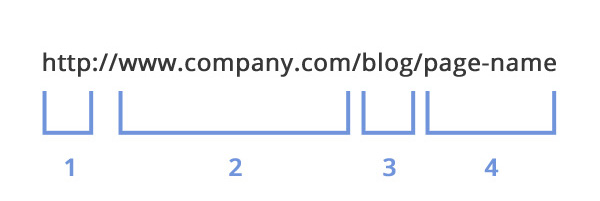
URL structure has been debated within the SEO industry for years. From the number of subdirectories to the placement of keywords in URLs, SEOs have tried many optimization techniques to improve their sites’ rankings.
The real question is, does your URL structure even help with your overall traffic? To answer this question, we decided to do some research to help you make a data-informed decision.
Extraneous characters
Sometimes you see strange characters in URLs such as &, %, $, and @. It is more difficult for search engines to crawl websites if their URLs contain many of these extraneous characters.
If you doubt whether extraneous characters are important, consider that Google has even gone on record to state that you should be using dashes over underscores because it affects how their search engine reads the keywords in your URL. For instance:
- com/red-widget – Google sees that this URL is about red widget.
- com/red_widget – Google combines the word whenever you use an underscore. So, in this case, Google reads your intended keyword as redwidget with no space.
We analyzed the top 100 results for 1,000 keywords in various industries. Can you guess what percentage of high-ranking URLs contain extraneous characters?
It’s not even 1%. In fact, it’s only .194%, which is roughly a fifth of a percent. This shows that you shouldn’t use extraneous characters in your URL.
URL length
Regarding URL length, there’s no better place to look than Moz.
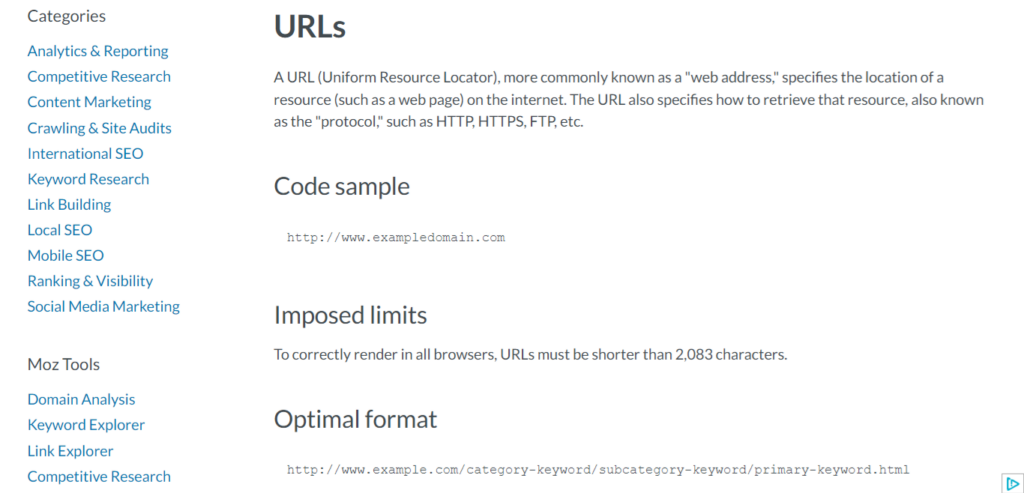
Back in 2015, we analyzed the top 100 results for 1,000 keywords; here is what we found:
- URLs ranked in the top 10 results on average contained 37 characters.
- URLs ranked in the top 20 results on average contained 35 characters.
- URLs ranked in the top 30 results on average contained 39 characters.
- URLs ranked in the top 40 results on average contained 41 characters.
- URLs ranked in the top 50 results on average contained 36 characters.
- URLs ranked in the top 60 results on average contained 32 characters.
- URLs ranked in the top 70 results on average contained 48 characters.
- URLs ranked in the top 80 results on average contained 45 characters.
- URLs ranked in the top 90 results on average contained 41 characters.
- URLs ranked in the top 100 results on average contained 38 characters.
Based on this data, URLs containing 35 to 40 characters tend to dominate the search listings. This doesn’t necessarily mean that long URLs can’t rank, especially considering that 21% of the URLs that rank on page one contain over 60 characters. It’s still worth noting that most URLs fit within the range above.
Keywords within URLs
In 2014, Search Metrics analyzed 300,000 URLs and found some interesting data.
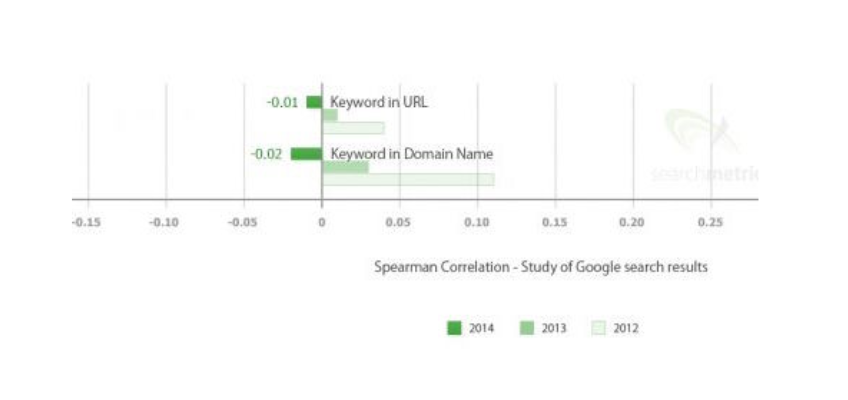
As you can see from this graph, having a keyword within your domain name and URL is a declining factor in rankings. It is becoming less important over time since Google emphasises other search factors more.
When you create URLs within your site, don’t worry about making them keyword-rich. It doesn’t hurt to add keywords if it makes sense, but you shouldn’t stuff your URLs with keywords, or they will seem unnatural.
Subfolders
URLs contain subfolders—in many cases, tons of subfolders. Here is an example URL from a blog post we published in 2015:
How to Engage and Persuade People Through Storytelling
As you can see from the URL, there are three main subfolders: the first is 2015, the second is 04, and the third is 03.
When analyzing the top 10 search listings for 1,000 keywords, we found that some of the top-ranking listings contain no subfolders, while others contain up to 12. We found no correlation between the number of subfolders and the positioning of the websites that rank on page one.
In many cases, the keywords for sites that ranked first, such as elephant population, contained 3 subfolders; in other cases, they contained no subfolders.
To keep things clean, you should try to have the least possible number of subfolders, but this won’t greatly impact rankings. It’s best to optimize your site from a usability standpoint.
Direct traffic
Over the years, we’ve continually heard that short URLs are better for direct traffic. We’ve never taken this approach on Quick Sprout, whereas on some of our other blogs, like KISSmetrics, we only try to use short URLs.
The KISSmetrics blog does seem to get more traffic overall than Quick Sprout, but let’s look at direct traffic only. Here is the direct traffic to Quick Sprout over the last 30 days:
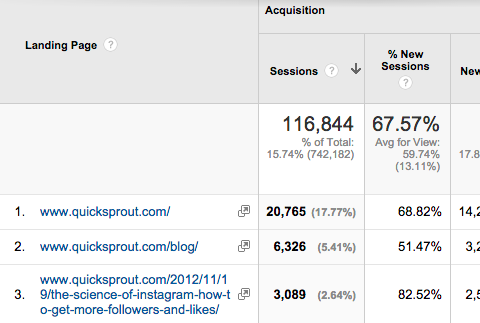
And here is the direct traffic for the KISSmetrics blog:
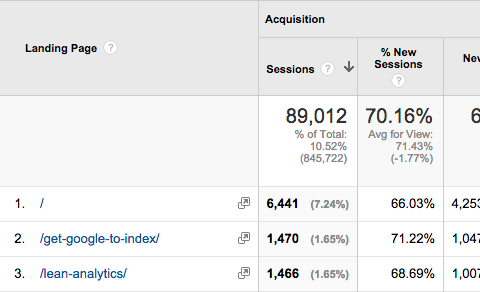
As you can see, Quick Sprout gets 31% more direct traffic even though the KISSmetrics blog generates 14% more traffic and contains shorter URLs.
Conclusion
Optimizing your URLs—by avoiding extraneous characters, using dashes, and adding appropriate keywords—can’t hurt your rankings.
However, there’s no need to focus too much of your marketing efforts on your URL structure because it doesn’t impact rankings as much as backlinks or content quality.
